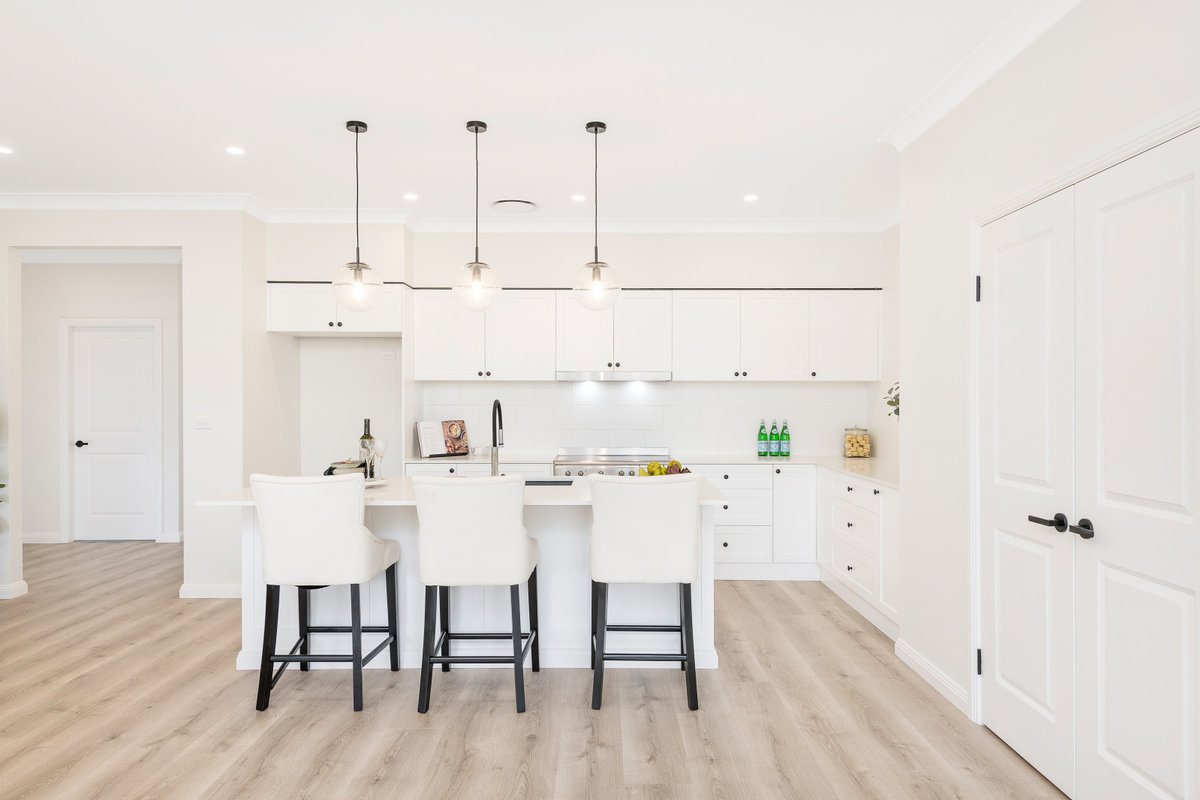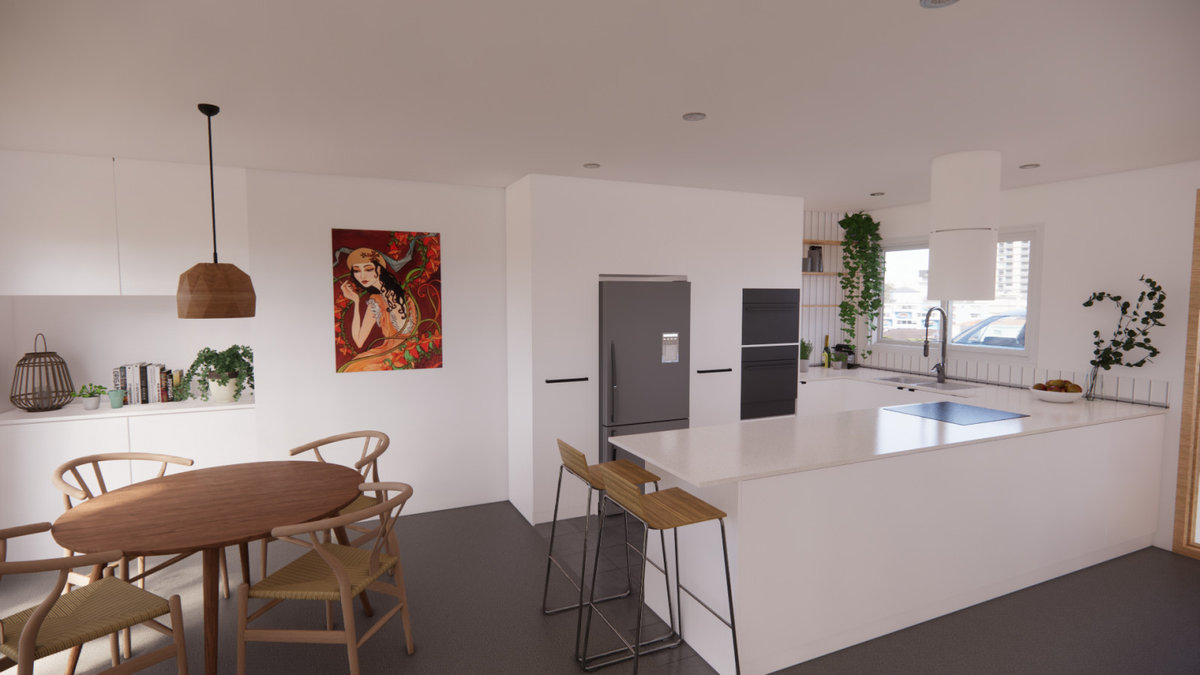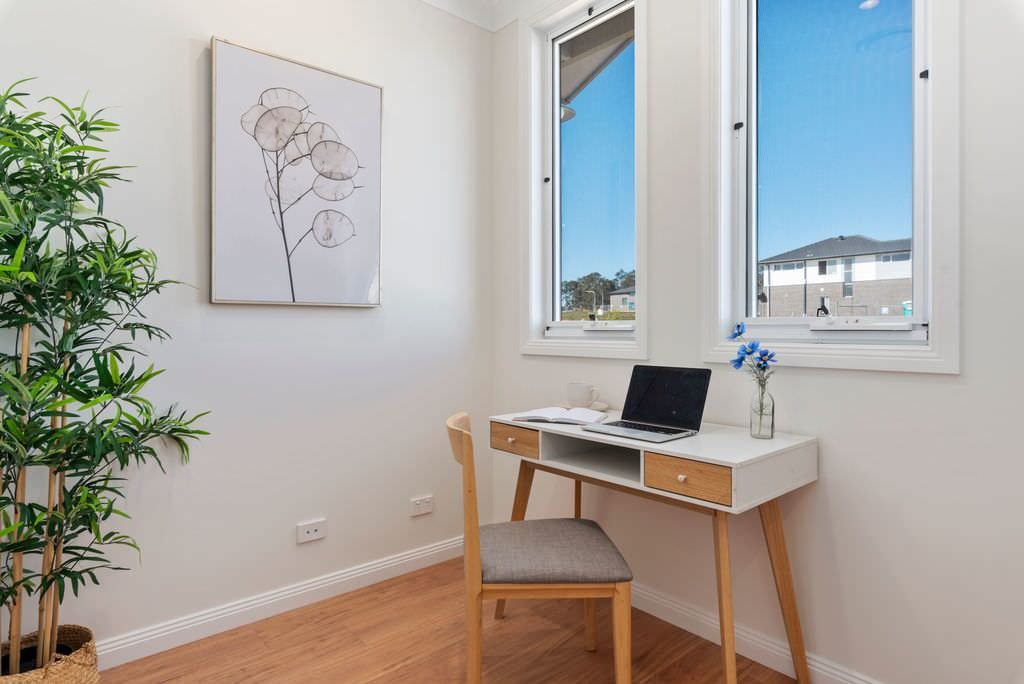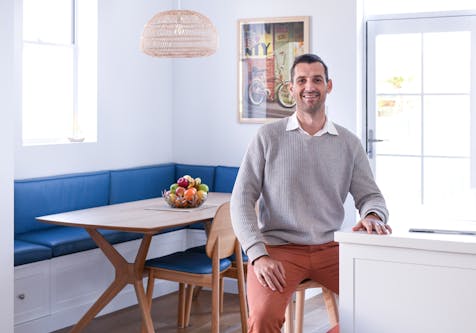Help Your Business Thrive: 3 Designers and Builders Share Their Best Tips
Hear pros’ strategies and support tools for increasing their reach, leads and profits
Three successful design and construction company owners recently joined Houzz Australia’s communications manager, Santi Arya, for an insightful webinar: Ian Knox of Valkyrie Interiors in Canberra, Veronica Sparagis of Ultima Building Group in Sydney and Troy Panah of Panadium Design & Construction in Sydney. In it they shared how they generate quality leads, manage projects efficiently, make the most of their marketing efforts and create great experiences for their clients, their teams and themselves. Missed the event? This recap will get you up to speed.
1. Focus on the Good
When you’re starting a business, it can feel like all work and no play. And the pandemic is throwing its share of challenges into the mix these days. But keeping a positive attitude will go a long way toward helping you maintain perspective. “Construction business obviously has monumental challenges, but the win days really do make it worth it,” Panah says. “A lot of the time, you just have to suck it up and deal with it, because the highs are really high.… I think we’re very lucky to be in this space, and I think we should use all the opportunities that we’re lucky enough to have to build this business.”
It can be helpful to remember that nothing lasts forever — today’s tough times might evaporate in tomorrow’s sun. “It was really, really hard work [in the beginning], and I was by myself,” Knox says. “Didn’t have the tools, didn’t have anything, and just really, really, really worked hard six months in that little garage until three o’clock in the morning to get jobs done so we could make enough money to do the next one.… These days I’ve got the opposite problem. I’m trying to figure out exactly which jobs I need to quote for first.”
Sparagis keeps the big picture in mind: “It’s definitely got big, tough days but really big, good win days as well,” she says. And her work-life balance is much better as the manager of Ultima Building Group than when she was a full-time psychologist.
2. Develop a Plan and a Process
Disorganisation, lack of foresight and constantly playing catch-up can do more than stress you out and wear you down; they can lose you business. Creating a business plan is key to success, no matter how small your business is. “We began with one job — a nonintentional, very, very accidental start to the business…. I just figured it out as we went along,” Knox says. “What I did do though, the moment I realised what I was going to do, was I sat down and did a business plan about what that might look like and where I thought it might go. Even from day one I at least had some idea what I was trying to achieve.”
Sparagis focuses on the process part of her company’s plan. “At Ultima Building Group, we have a big focus on our systems and processes, and really making sure that these are in place and being followed and consistently reviewed,” she says. The systems require documented procedures that can be repeated, which makes our clients have a better experience of what we offer. Our productivity increases, because things are consistently being done the way that we want them to be done. Issues are resolved much quicker if all the steps are followed.”
Houzz Pro is an integral part of all three pros’ systems. “We use Houzz to manage our quoting system and most of our communications in the lead stage. Houzz is incredibly valuable for creating the leads, managing the leads, delivering the quotes,” Knox says.
“Houzz has done such an extensive A to Z of what professionals need in terms of lead management and project quotes,” Panah says. “It’s really the future in terms of how you want to automate quotes and manage clients.… We’re in a very digital age right now.
3. Build a Great Team and Culture
Even if your business is 100% a solo operation, you’ll be working with suppliers and subcontractors — so you want to build the team that works best for you. And if you do have staff, you’re responsible for creating the culture that allows your team to do their best work.
“In business training, they say to you that [grade-]A people hire [grade-] A-plus people. I’ve found that to be really, really true,” Knox says. “We might have some technology holes, or a process might not cover something that’s come along, [but] if we’ve got the right people and the right culture in the business, then it will ultimately take care of itself…. The secret was creating a culture that itself rejected those that don’t fit and attracted those that do.”
He adds that “it starts with the person who owns the company. If you treat your people well, they will end up treating you well; loyalty becomes a factor. Once you’ve got a really loyal, capable set of people in the business who follow the culture that you’ve set, the business can solve its own problems.”
Sparagis says that having a solid process helps create a positive company culture. “Our flow charts and checklists not only increase our client experience, but also our employees know what we need and expect from them, which generates them having a better experience of their work,” she says. “We’re able to then produce better business assets. As a company, I think it’s more valuable for a business to have as many assets as possible. If those assets are repeatable, it’s a more valuable company for you to have.”
4. Market Your Company Wisely
The importance of good, effective marketing for new businesses can’t be underestimated. It’s how you get in front of potential clients, and it’s also key to building a top reputation in a crowded market. “It’s nuts to not get behind any marketing advantages that you can get,” Panah says.” Either putting the time to learn it yourself or hire the right people to really, really grow that aspect of the business as much as you can.”
He also points to the importance of budgeting for marketing instead of trying to do everything yourself on the cheap. “A lot of people, I think their mistake is not putting enough money in marketing,” he says. “Everybody’s fighting for the top Google space; everybody’s fighting for the top space in housing, the recommendations. I think a lot of small businesses are afraid to spend the extra couple of thousand dollars to be in front of people’s faces. I think that’s a big mistake.… If you have the capital, you will get as many jobs as you spend right now with digital marketing.”
Knox generates most of his leads through Houzz Pro. “We have a website, but to be honest with you, we don’t really use it very much,” he says. “It’s only really there for someone on Houzz who finds us to go and check out what we can do and then come back to it. That’s how we filter leads; that’s how we create leads.”
And once you’ve created a marketing plan, it’s a good idea to revisit it periodically as your company’s needs and goals change. “Our marketing approach has evolved quite drastically in the last three years and continually, even now,” Sparagis says. “We really sat down about three years ago when we shifted from construction to building. We focused on the fact that our brand wasn’t a building company brand. We really targeted our marketing in strengthening our brand. We then shifted from that to identifying the clientele who we best suit.”
5. Grow Smoothly — and Profitably
When you’re just starting out as a designer or builder, you might think growing pains are a given. But learning from other pros, especially from their mistakes, can go a long way toward paving a smooth growth path. For instance, Knox says it’s essential to know your accurate cost base for every project. “If I know how much it costs me to do a thing, then I know how to price it. This is critical in growing a business,” he says. “I know how much I have to make for that job to be worthwhile.… If you’re not making profit and you’re growing, you will go bankrupt. It’s as simple as that.”
Sparagis takes this concept a step further, citing the importance of “really documenting what you’ve actually spent. Really clearly identifying where that money is going while you have the job and the project on board. Knowing that when you go and quote another job, which you will win, that you are making a profit and that your margin hasn’t decreased. Then outsourcing on the items that you really don’t need to spend your time doing. For me, it’s marketing. For others, it might be bookkeeping, or accounting, or advertising — all those sorts of things.”
And Panah emphasises the value of considering personal fulfillment as the business grows. “It’s important to see where you are, realistically,” he says. “How quickly can you grow and maintain all your happiness in relations and children? I think if you’re a young single individual, you can probably hustle it out a lot more and a lot harder. I had this problem with my own father when he was starting to grow the business and I decided to come on board. I couldn’t understand why he would take weekends off, because I was like, let’s just go, go, go. I did seven months’ worth of weekends and realised I had no social life and nothing to account for other than a bit of profit. You want to manage the speed of growth at a level you can handle personally.”
While you’re keeping an eye on personal happiness, don’t let cash flow out of your sight. “If you run out of money, where is it going to come from next? Is it finance? Is it family? Out of your own pocket? Then when you get to a point of profitability, you’ve also got to stop sometimes, put some money in the bank, take a breath. You can’t continue to grow forever,” Knox says.
6. Develop Great Client Relationships
Getting along with clients is a must—for less stress, more rewarding projects, great reviews and abundant referrals. Every pro has their own personality and strategies for this, but a few ideas can work for anyone.
“If we say we’re going to do something, we do it,” Knox says. “Even if we have to do it late because there’s been some other thing that happened, which happens in this industry, we will tell the client that we’re going to be late because of this thing. We don’t lie to them. We tell them the truth.… I found that all of the clients in those situations have always been happy, because we actually spoke to them instead of just not showing up for three weeks.”
“We make sure that the lead of the project is appropriate for our company, but also that we as a builder get on with the client,” Sparagis says. “Even though the project might be a really great profitable project, if we don’t get on well with the client, or if the client doesn’t get on well with us, it’s not a good lead, so it’s not qualified.”
Knox also strives to ensure that clients are a good fit in his onboarding process. He has a rating system “that helps us identify exactly who we want to work with and what kind of jobs we want to do,” he says. “There is a really important part in that too. It’s not always about profitability. There must be profitability, but the company wants to make beautiful spaces for people. We want to do things that enrich people’s lives—that’s why we’re here, all this. That’s how we select what we’re doing.”
7. Learn From Those Who’ve Been There
You can save a world of trials and tribulations by learning from pros who have already gone through what you’re going through now. We asked all three pros here what other advice they would give to designers and builders who are just starting out, and here’s what they said.
Sparagis: “I think if I had gone into the business more as an entrepreneur who owns the business and outsourced sooner than when I had, I would be in an even better position than I am today. I would have got here quicker. Second, I would tell myself that bad days are OK because good days come really soon. Not giving up and just keeping your head high, knowing that if you pull through it and you’re good at what you do and you love what you do, then it just gets better and better.”
Knox: “On day one, figure out what you want to do, what kind of business you want to be. Even though I might’ve accidentally started this business, I knew from the start I wanted to be what we are now. We create beautiful things for people. The next question was, well, how do you do that? I started in the garage with nothing, but I wrote a business plan straightaway. The first business plan is going to be wrong — like, really wrong — but you’ve still got to start somewhere and understand what it is you’re trying to achieve. Then when you get a little bit more experience, go back and rewrite it and understand where you’re trying to get to next.”
He adds, “The other thing I would say [is], it’s a lonely path until it gets to the stage we’re at now. Then it becomes absolutely worth all of the effort we put in.”
Panah: “My first advice is that as the builder, the quicker you realise you’re responsible for everything, the better. You need to understand that if any of the subbies [subcontractors] you get, any of the neighbours that complain, or if the council has a problem, you’re the guy. There’s going to be a lot of stuff that goes wrong, because there’s just simply too many responsibilities. The odds of you killing it in every single contract with no problems is literally zero. It’s a big part of the job, but the paycheck makes it worth it. I think you’ve just got to deal with it and keep telling yourself that anything you’re going through is temporary.”
He offers this final thought: “We live in a great country. We are blessed, and we really have to understand if we have that gratitude, it helps a lot with the bad days. I don’t think anybody else in the world is as lucky as us. I truly believe it.”
Ready for your business to reach its full potential? Start your free 30-day trial of Houzz Pro today.















